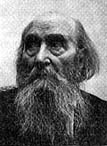ISTÓK, János
(1873, Bácsújfalú - 1972, Budapest)


Sculptor. First a pupil of a wood carving school in Hosszúfalus, Istók went to the Academy in Munich in 1892 and finished his art studies as a pupil of Alajos Stróbl at the master school of sculpture. As a young artist, he was commissioned to create a statue of Ferenc Szécheny, the founder of the Hungarian National Museum, which was unveiled to celebrate the centenary in 1902. He was awarded the first prize at the Vince Ramasetter competition in 1905, it was then erected in Sümeg in 1908. "Work", a part of a composition cut in stone, was erected in front of the Parliament on 1st May, 1919.
He was commissioned to design a number of war memorials after World War I ("Relief" on the facade of the Servite Church in Martinelly tér, Budapest). "The Statue of Bem", his best known statue was erected in Budapest in 1934. He prepared ornamental sculptures ("Sportswoman and Sportsman", Császár Swimming Pool in 1902) and tombs mostly in marble ("Károly Than", Kerepesi Cemetery, 1913, and "Tomb of Lajos Holló" in bronze, Kerepesi Cemetery, 1913). He modelled remarkable portraits of his family. His smaller busts ("Vörösmarty", "Jókai", "János Vajda" and "Madách") deserve attention, too. The bust of Ferenc Móra was erected in Kiskunfélegyháza in 1959. His works include reliefs ("Sándor Petőfi", Nagyszeben), plaquettes and medals.
He was one of the most popular sculptors of the period between the two wold wars. His art represents a mixture of realism, naturalism and academism. Four of his statues were erected in Budapest and sixteen in the country.
